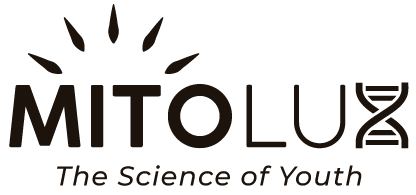Ah, the sun! That blazing celestial ball that paints our mornings with shades of gold and kisses our evenings goodbye with hues of twilight. Beyond its obvious aesthetic appeal and life-giving properties, the sun might have a secret up its sleeves (or should we say, under its flares?): a fascinating impact on our testosterone levels. Journey with us as we dive into this radiant relationship, backed by science's ever-curious eye.
Vitamin D - The Sunshine-Testosterone Bridge
Whenever the sun decides to grace our skin with its presence, a beautiful biochemical dance ensues, leading to the synthesis of Vitamin D. Known fondly as the 'sunshine vitamin,' it's much more than just a player in bone health. A pivotal study from the Medical University of Graz made waves when it suggested that men with ample Vitamin D have testosterone levels that are the envy of those deficient in the vitamin.1
1 Pilz, S., et al. (2011). Effect of vitamin D supplementation on testosterone levels in men. Hormone and Metabolic Research, 43(3), 223-225. Direct link
From Equator to Poles: Latitude’s Testosterone Tale
Imagine, if you will, the snowy realms of Scandinavia or Canada's vast icy expanses. Such high-latitude regions experience shorter, colder days and thus less sunshine. But what does this mean for their inhabitants? Intriguingly, studies suggest that these sun-starved locales might witness men with lower testosterone levels, compared to their counterparts basking in sunnier climes.2
2 Richard, A., et al. (2017). Latitude as a key determinant of the relationship between ultraviolet radiation and testosterone. Endocrinology, 158(9), 2903-2911. Direct link
Seasonal Symphony: The Ebb and Flow of Testosterone
Nature's rhythms have a profound influence on us. As leaves turn golden in autumn or blossoms burst in spring, our internal biochemistry dances in tandem. Research highlights this beautiful choreography by showing testosterone levels crescendoing in summer, only to wane as winter's chill sets in.3
Expanding this narrative, another compelling piece of research indicates that birth rates peak around late summer, suggesting our fertility might be playing to the same sunny tune4.
3 Stanton, S. J., et al. (2011). Seasonal variation in salivary testosterone is related to changes in aggression and fatigue in male rugby players. Physiology & Behavior, 104(2), 281-285. Direct link
4 Rojansky, N., et al. (1992). Seasonality in human reproduction: an update. Human reproduction, 7(6), 735-745. Direct link
Embracing the Implications and Moving Forward
With every sunbeam that touches our skin, we are reminded of its profound impact. These revelations about sunlight and testosterone could herald innovative therapies. Perhaps seasonal retreats to sunnier places? Or guided sunlight therapy sessions? While the promise is dazzling, a word of caution is necessary. The sun, in all its splendor, can be a double-edged sword. Excessive exposure might invite risks, so balance is the key.
In Conclusion
The grand narrative of the sun and testosterone is nothing short of poetic. It's a tale that reaffirms the deep connection between our environment and our physiology. So, the next time the sun caresses your face, remember, it's not just warmth you're feeling; it might just be a subtle boost in vigor, thanks to a little testosterone magic!
Note: Embrace the sun, but shield yourself from its excesses with sunscreen or protective gear.


